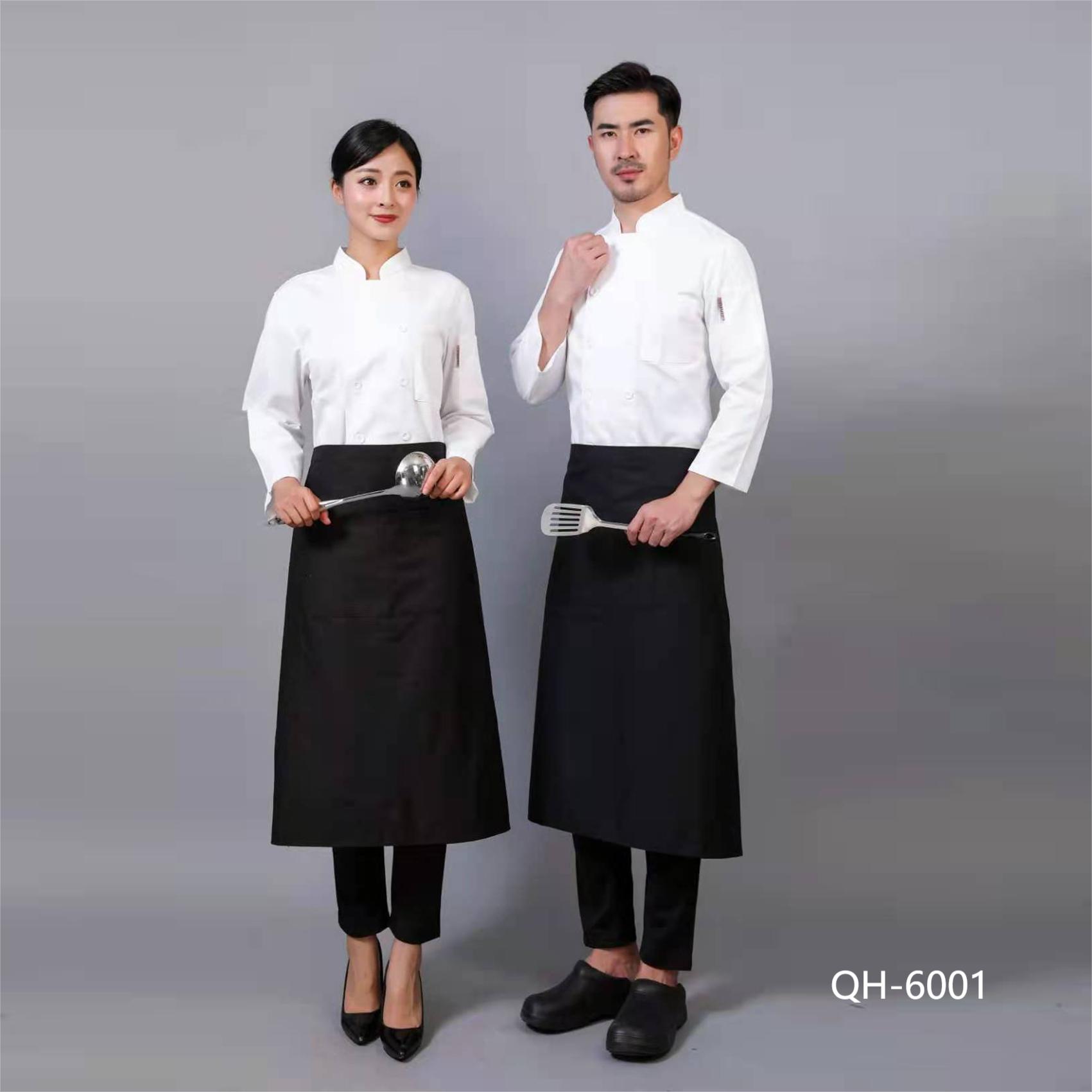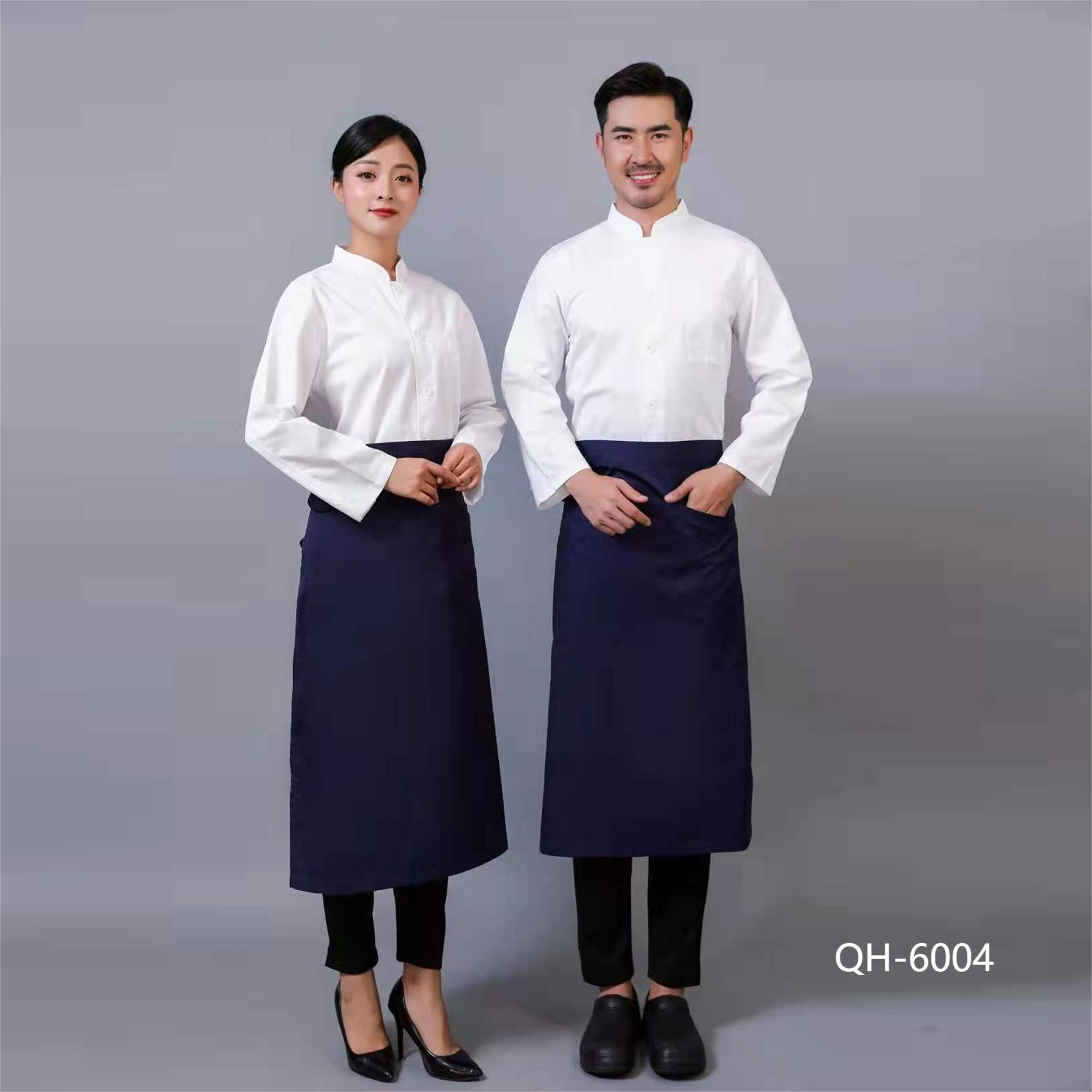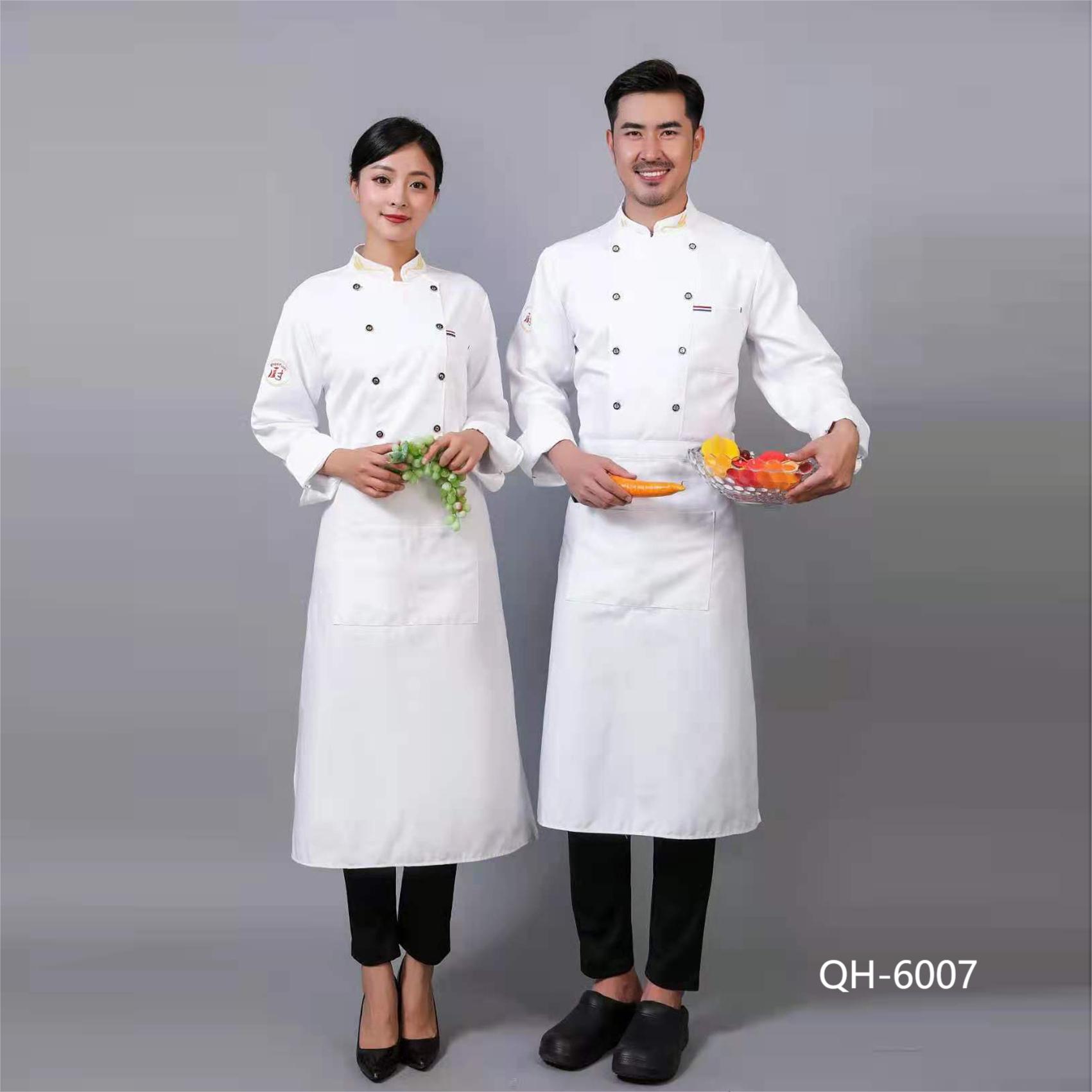- Afrikaans
- Albanian
- Arabic
- Armenian
- Basque
- Belarusian
- Bengali
- Bulgarian
- Croatian
- Czech
- Danish
- Dutch
- English
- Esperanto
- Finnish
- French
- German
- Greek
- Hebrew
- Hindi
- Indonesian
- irish
- Italian
- Japanese
- Javanese
- kazakh
- Rwandese
- Korean
- Kyrgyz
- Latin
- Latvian
- Luxembourgish
- Malay
- Myanmar
- Nepali
- Persian
- Polish
- Portuguese
- Romanian
- Russian
- Serbian
- Slovak
- Spanish
- Swedish
- Tagalog
- Tajik
- Turkish
- Ukrainian
- Uzbek
- Vietnamese
अगस्ट . 13, 2025 02:20 Back to list
Premium Cotton Chef Uniforms: Comfort & Style for Pros
The Strategic Advantage of Pure Cotton Chef Uniforms in Professional Culinary Settings
In the rigorous and demanding environment of commercial kitchens, the choice of professional attire extends beyond mere aesthetics; it directly impacts hygiene, safety, and operational efficiency. A cotton chef uniform represents an essential investment for culinary professionals seeking superior comfort, durability, and a pristine appearance. Unlike synthetic alternatives, natural cotton offers unparalleled breathability and moisture absorption, crucial for maintaining optimal body temperature and reducing fatigue during long shifts. This foundational material choice underpins the performance of the Chef Uniform, safeguarding chefs and elevating the professional standard within the foodservice industry, from Michelin-starred restaurants to high-volume catering operations.
Our commitment to quality ensures that each uniform is crafted to meet the stringent demands of culinary environments, promoting a safe and productive workspace. The inherent properties of cotton, combined with advanced textile manufacturing, provide a uniform that excels in critical areas such as thermal regulation, skin comfort, and resistance to everyday wear and tear. This focus on material science and ergonomic design defines the efficacy of a premium cotton chef uniform in a professional setting.
Precision in Textiles: The Manufacturing Journey of a Cotton Chef Uniform
The production of a high-quality cotton chef uniform involves a meticulous series of stages, ensuring both performance and longevity. The process begins with the careful selection of premium cotton fibers, often chosen for their staple length and purity, which directly influence fabric strength and softness. These fibers are spun into yarns, then woven or knitted into fabrics, with common weaves including twill for durability or poplin for a crisp finish. Key manufacturing processes involve CAD-assisted pattern drafting to optimize fabric yield and ensure precise sizing, followed by automated cutting using CNC machinery for accuracy. Fabric types commonly range from 6 oz to 8 oz cotton twill, offering a balance of breathability and resilience. For specific applications like high-heat kitchens, flame-resistant treatments compliant with standards such as NFPA 2112 might be applied, although standard chef uniforms prioritize breathability and comfort.
Assembly involves industrial-grade stitching, often with double-needle seams at stress points like shoulders and armholes, enhancing the uniform's lifespan. Quality control is paramount, with each uniform undergoing rigorous inspections for fabric defects, stitching integrity, and adherence to specified dimensions. Compliance with international standards, such as ISO 9001 for quality management systems and OEKO-TEX Standard 100 for harmful substances in textiles, is crucial. This ensures the product is not only durable but also safe for prolonged skin contact. The estimated service life for a professionally maintained cotton chef uniform typically ranges from 18 to 36 months, depending on usage intensity and laundering practices. These uniforms are indispensable across various sectors including professional catering, hospitality chains, culinary arts education, and institutional food service, providing an optimal blend of comfort, hygiene, and professional presentation.

Figure 1: Illustration of typical Chef Uniform fabrication, emphasizing robust stitching for durability.
Technical Specifications and Performance Metrics for Cotton Chef Uniforms
Understanding the technical specifications of a cotton chef uniform is vital for procurement specialists and culinary professionals alike. These parameters directly influence performance, comfort, and longevity in demanding kitchen environments. Key specifications often include fabric composition, typically 100% premium cotton, and fabric weight, measured in ounces per square yard (oz/yd²) or grams per square meter (GSM). A higher GSM often indicates greater durability but can reduce breathability. Shrinkage resistance is a critical factor, with pre-shrunk fabrics offering superior dimensional stability after washing. Colorfastness, tested against washing and light exposure, ensures the uniform maintains its professional appearance over time.
Performance metrics also encompass breathability (air permeability), moisture absorption rate, and tear strength, all of which are superior in natural cotton compared to many synthetic blends. For example, cotton's highly porous structure allows for excellent air circulation, dissipating heat and reducing the risk of heat stress for chefs. Its inherent hydrophilicity means it can absorb moisture, such as sweat, effectively, preventing discomfort. The table below outlines typical technical parameters for a high-quality cotton chef uniform, providing a benchmark for expected product attributes.
| Parameter | Specification | Benefit/Standard Reference |
|---|---|---|
| Fabric Composition | 100% Mercerized Cotton | Enhanced strength, luster, and dye uptake. |
| Fabric Weight | 6.5 - 7.5 oz/yd² (220-255 GSM) | Optimal balance of durability and breathability. |
| Weave Type | Twill or Poplin | Twill for durability, Poplin for crispness and lighter feel. |
| Shrinkage Rate | <3% (after 3 washes) | Maintains fit and size; tested per AATCC 135. |
| Colorfastness to Washing | Grade 4-5 (on 1-5 scale) | Retains color vibrancy; tested per ISO 105-C06. |
| Breathability (Air Permeability) | >100 mm/s | Ensures comfort in hot environments; tested per ISO 9237. |
| Certifications | OEKO-TEX Standard 100, ISO 9001 | Guarantees absence of harmful substances and quality management. |

Figure 2: Close-up demonstrating the weave and texture of premium cotton fabric used in a chef uniform.
Comparative Performance: Cotton vs. Blended Chef Uniforms
When selecting professional culinary apparel, the choice between a pure cotton chef uniform and a polyester-cotton blend is a critical decision influenced by specific operational demands. While blends often offer enhanced wrinkle resistance and faster drying times, pure cotton excels in areas paramount to a chef's comfort and safety in high-temperature, high-pressure environments. Cotton's natural fiber structure allows for superior breathability, preventing heat buildup and minimizing the risk of heat-related stress, a common concern in professional kitchens. Its hydrophilic properties enable it to absorb significant amounts of moisture, effectively wicking sweat away from the skin, a feature synthetic fabrics often struggle to replicate without specialized treatments.
Furthermore, pure cotton is inherently more resistant to melting and dripping when exposed to high heat, a critical safety advantage over synthetic blends which can melt onto the skin in extreme conditions, leading to severe burns. While blends might offer a perception of durability due to synthetic strength, quality cotton uniforms are designed with reinforced stitching and robust fabric weaves to withstand industrial laundering cycles, providing comparable or even superior longevity in many cases. The table below offers a direct comparison of key performance indicators between 100% cotton and common poly-cotton blends, highlighting the distinct advantages of each for a cotton chef uniform application.
| Feature | 100% Cotton Uniform | Poly-Cotton Blend Uniform (e.g., 65/35%) |
|---|---|---|
| Breathability | Excellent, highly permeable to air, aids thermal regulation. | Good, but generally less breathable than pure cotton; can feel warmer. |
| Moisture Absorption | Superior, absorbs significant sweat, comfortable against skin. | Moderate, moisture tends to sit on the fabric surface. |
| Heat Resistance/Safety | High; chars rather than melts, reducing burn risk from splashes. | Lower; polyester can melt and stick to skin at high temperatures. |
| Wrinkle Resistance | Moderate; requires ironing for crisp look. | High; often retains smoothness with minimal care. |
| Durability | Excellent with proper care; strong natural fibers. | Very good; synthetic fibers contribute to tear resistance. |
| Stain Release | Good; natural fibers release oil-based stains more readily than synthetics. | Moderate; can sometimes retain oil-based stains. |

Figure 3: Professional chef in a tailored cotton chef uniform, highlighting comfort and mobility.
Customization and Branding for Your Cotton Chef Uniforms
For businesses in the culinary and hospitality sectors, the cotton chef uniform serves as a vital component of brand identity. Beyond functionality, uniforms project professionalism, unity, and a consistent brand image to customers. Our comprehensive customization services allow organizations to tailor uniforms to their specific branding requirements, enhancing corporate identity and team cohesion. Options include precision embroidery of company logos, names, or special insignias, which provides a sophisticated and durable branding solution. Screen printing is another popular choice for vibrant, larger designs, suitable for specific events or promotional uniforms. Furthermore, bespoke design modifications, such as specific collar styles, cuff designs, or pocket configurations, can be implemented to align with unique operational needs or aesthetic preferences.
We collaborate closely with clients to ensure design integrity and practical application. For instance, a luxury hotel chain might opt for subtle, tone-on-tone embroidery on the collar of each cotton chef uniform, reflecting their commitment to understated elegance. Conversely, a casual dining franchise may prefer prominent, multi-color logos on the chest for immediate brand recognition. Our experienced design team guides clients through material choices, color palettes, and branding techniques, ensuring the final product not only meets but exceeds expectations in terms of both appearance and performance. Our recent partnership with "Gourmet Foods Inc.," a leading catering service, involved supplying custom-designed chef uniforms with their embroidered emblem, resulting in enhanced team morale and significant positive feedback from their clientele regarding professionalism.

Figure 4: Example of a customized cotton chef uniform featuring a precisely embroidered brand logo.
Ensuring Trust and Reliability: Certifications, Warranty, and Support
Building trust with our B2B partners is paramount, especially when supplying essential workwear like the cotton chef uniform. Our commitment to quality and ethical manufacturing is substantiated by rigorous certifications and transparent operational practices. We adhere to ISO 9001:2015 quality management system standards, ensuring that every stage of production, from raw material sourcing to final inspection, meets international benchmarks for consistency and excellence. Furthermore, our fabrics are often certified by OEKO-TEX Standard 100, which guarantees that textiles and fabrics are free from harmful substances, safeguarding the health of the wearer and reinforcing our dedication to product safety and environmental responsibility.
Our service commitment extends beyond product delivery. We provide clear documentation of our typical delivery cycle, which for standard orders ranges from 3-5 business days, and for customized bulk orders, typically 15-20 business days, depending on complexity and volume. Each cotton chef uniform comes with a standard 12-month manufacturing defect warranty, covering issues related to stitching, fabric integrity, or faulty components under normal use. Our dedicated customer support team is available during business hours to address any inquiries, provide technical assistance, or facilitate reorders, ensuring a seamless and reliable partnership. This comprehensive approach to quality assurance and client support solidifies our position as a trusted supplier in the professional uniform market.
Frequently Asked Questions (FAQ) About Cotton Chef Uniforms
Q1: What are the primary advantages of a cotton chef uniform over synthetic blends?
A1: The main advantages include superior breathability, excellent moisture absorption, and enhanced safety in high-heat environments where cotton chars rather than melts, reducing severe burn risks. Cotton also offers natural comfort and a professional aesthetic.
Q2: How should a cotton chef uniform be cared for to maximize its lifespan?
A2: To maximize lifespan, wash cotton uniforms in cold or warm water with similar colors, avoid excessive bleaching (especially on colored uniforms), and tumble dry on a low setting or hang dry. Ironing on a medium-high setting can restore a crisp appearance. Following specific care instructions on the garment label is always recommended.
Q3: Are these uniforms pre-shrunk to prevent size changes after washing?
A3: Many of our premium cotton chef uniform models are pre-shrunk to minimize shrinkage, typically resulting in a shrinkage rate of less than 3% after multiple washes. This ensures consistent sizing and fit over the uniform's lifespan.
Q4: Can we order customized cotton chef uniform designs with our company logo?
A4: Yes, we offer comprehensive customization services including embroidery and screen printing for company logos, names, and bespoke design modifications. Our team will work with you to ensure your branding is accurately represented on the uniforms.
Q5: What certifications do your cotton fabrics hold?
A5: Our cotton fabrics frequently carry the OEKO-TEX Standard 100 certification, assuring that they are tested for and free from harmful substances. Our manufacturing processes also adhere to ISO 9001:2015 quality management standards.
Conclusion
The strategic selection of a cotton chef uniform is a cornerstone for professional culinary establishments. Its intrinsic properties—superior breathability, moisture absorption, and natural heat resistance—provide unparalleled comfort, safety, and a dignified professional appearance in the demanding kitchen environment. By integrating advanced manufacturing techniques, adhering to stringent quality control standards like ISO 9001 and OEKO-TEX, and offering extensive customization options, we ensure that our uniforms are not just apparel but a critical asset that enhances operational efficiency, team morale, and brand prestige. Investing in a high-quality cotton chef uniform is a commitment to the well-being of culinary staff and the elevated image of your brand, affirming a dedication to excellence that permeates every aspect of your operation.
References
- ASTM International. (2020). Standard Test Methods for Physical Properties of Fabrics.
- International Organization for Standardization. (2015). ISO 9001:2015 Quality Management Systems – Requirements.
- OEKO-TEX International Association. (2023). OEKO-TEX Standard 100 Certification Guidelines.
- Textile Institute. (2019). The Journal of The Textile Institute.
This is the last article
-
Work Reflective Vest: A Silent Guardian of Security
NewsJul.10,2025
-
Vest Reflective Safety: A Safety Lighthouse in Low Light and High Traffic Environments
NewsJul.10,2025
-
Soft Cotton Polo Shirts: A Fashionable and Practical Choice for Multiple Scenarios
NewsJul.10,2025
-
Soft Cotton Polo Shirts: A Fashionable and Practical Choice for Multiple Fields
NewsJul.10,2025
-
Reflective Vest: The Light of Industry and Outdoor Safety Protection
NewsJul.10,2025
-
Polo Shirt: A versatile and fashionable item that can be worn in one outfit
NewsJul.10,2025




